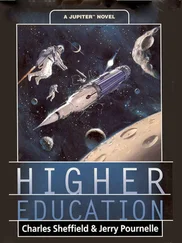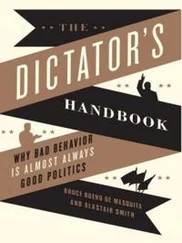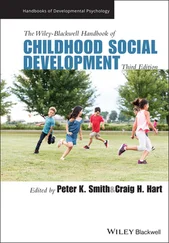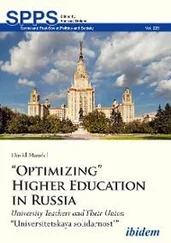(Student 1, Year 1 of project)
In addition, this student highlighted that universities are also places where bad habits can be developed, for example, through regular consumption of takeaway food. Through the hidden curriculum of the home, projects like the SSH have the potential to counter such bad habits, through provision of communal spaces and access to food growing and promote the development of more sustainable patterns of behavior.
In the academy, the role of the body in learning is often diminished by educators, giving preference to abstract, cerebral types of knowing (Ollis 2008). While the importance of embodied learning is increasingly recognized by ESD practitioners and in ESD scholarship, there still remains a reticence to incorporate it into everyday teaching, possibly due to lingering biases, methodological uncertainties, or impracticalities of trying to do so in educational institutions that have been built for didactic, classroom‐based learning. These areas of practical and visible learning, such as recycling and composting, conform to Vare and Scott's (2007, p. 193) ESD1, and as they acknowledge “it's a basic form of learning but it's still learning” which still comes with wider social and environmental benefits. Indeed, research by Chaplin and Wyton (2012, p. 413) highlight how even though students perceive sustainability as important “they demonstrate a lack of understanding of the concept or behavior that accords with these values,” and that further action is needed so that actions such as energy saving become normative behavior. The SSH provides a place for social modeling, an important way of learning pro‐sustainability behaviors, new routines, and social practices within the fabric of everyday living (Blewitt 2006). It provides a place to develop a community of practice and social learning through daily interactions with others.
Still and Kent (1996:131) describe the activist learner as one who “takes an active, assertive role in supporting measures that affect our common good – first, and continually, seeking to increase her/his level of conscious awareness of personal, social, political, economic, cultural and environmental realities.” By choosing to live in the SSH, students demonstrated a commitment to at least some of these areas. Chase (2000, in Ollis 2008) identified five different areas of learning of environmental activists: technical knowledge, political knowledge, personal growth, life skills, and knowledge of organizations. Even if we may find ourselves disappointed with what seems to be a lack of learning about political knowledge and knowledge of organizations, we do see the development of technical knowledge, personal growth and life skills. Our students, like all activists, must start somewhere. As with all communities of practice there are people at different stages of knowledge, newcomers as well as those who can pass on their knowledge, skills, and experience (Ollis 2008).
Student 2 is quoted in Section 2.3.2referring to the SSH as a space for informal debate and discussion amongst residents and guests, in which we can assume that the deeper and systemic issues contributing to unsustainability may be considered. However, it is clear that students struggle to articulate deeper learnings, or to identify them as valid and legitimate learnings worthy of being mentioned in an interview. However, the questions remain – can this deeper level of learning take place in informal curriculum projects, and how can it be better promoted?
Even within the informal curriculum, staff‐facilitated reflection to support learning may be possible through integration into the project's student support. There are also examples of written reflection requirements for awards relating to non‐formal curriculum activities. However, opportunities for reflection clearly differ between activities that may be classed as situated in the non‐formal curriculum, which are top‐down and university/Students' Union initiated, and those which are genuinely student‐led (the informal curriculum of Table 2.1). The formal curriculum may also have a role in fostering habits of critical thinking and reflection that enable students to independently make these links between everyday practices and underlying systemic challenges.
2.5 Activist Learning across the Formal, Informal, and Hidden Curriculum
There is growing interest in the role of the informal curriculum, the interrelations between formal and informal sustainability learning (Winter and Cotton 2012; Gramatakos and Lavau 2019), and the links between the formal, informal, and campus (part of the hidden, Cotton et al. 2020) curriculum (Hopkinson et al. 2008). This section explores these connections within the context of the SSH project and how the connections can be used to maximize learning.
The degree of university (or Students' Union) involvement in informal and non‐formal curricula can vary widely, as can the different learning communities that students create and engage with (Gramatakos and Lavau 2019). These range from top‐down designed and managed, but non‐credit bearing, official schemes (non‐formal curriculum), to structures, support, training, and recognition for student‐led societies, to the range of university‐linked activities in which students might be engaged that can be invisible to staff (informal curriculum; Table 2.1). The SSH project on which reflections in this chapter draw has moved in time from the non‐formal end of the informal spectrum, where although student‐initiated and non‐credit bearing, staff were more closely involved and had expectations of student reporting, to a more informal context, with no real external accountability requirements. Staff still take a key role in promoting the SSH project to recruit new students, and hence the project can be viewed still as having non‐formal elements.
The project has connections to the formal curriculum, which acted as a source of student inspiration, cohort creation, and recruitment to the project; it takes place across the non‐formal‐informal curriculum spectrum, and involves the hidden curriculum, through the place in which it is situated. Each of the four project initiators studied the same sustainability‐focused degree program. Students choosing this degree, already clearly had an interest in and passion for sustainability, making it easy for students with similar interests and passions to find each other. It is unlikely that such a project would happen with a student working in isolation, and so the opportunity for like‐minded students to meet and share ideas is important and can be catalyzed by the curriculum. This degree program also specifically aims to empower students to drive change, and one core module has an explicit aim of providing students “with the knowledge, understanding and skills to improve the environmental performance of their current and future employers” (Keele University 2021), which can be interpreted as the aim of developing change agency skills. This module also provides students with insights into sustainability in the university and the opportunity to think critically about existing university sustainability practices and to make recommendations for change. This provided a fertile backdrop for the development of the SSH project.
Activist learning activities situated in the formal curriculum have the advantage of providing scaffolding of support for students. The student in the second year of the project who expressed dissatisfaction at how much was achieved, referred to a number of challenges that they felt affected what the project achieved. This included the perception of limited commitment of others in the house, difficulties with communication, and resignation that they were unable to come up with ideas:
I'm not very much of an ideas person, which I think is another issue with me living in the bungalow this year because I am a doer rather than a thinker.
Читать дальше












